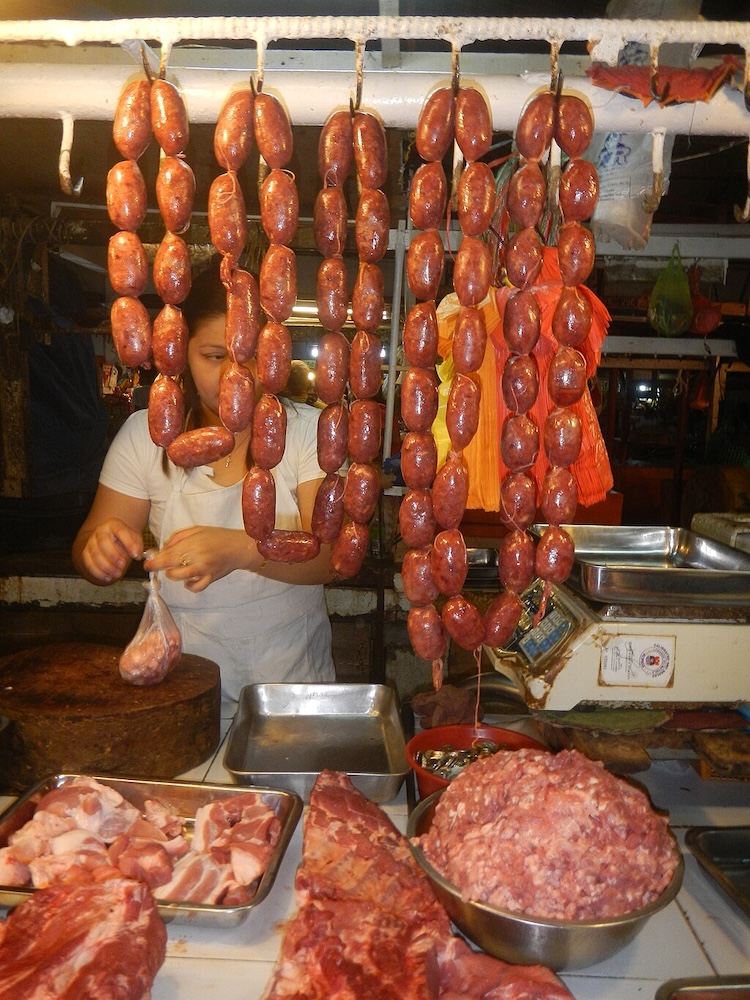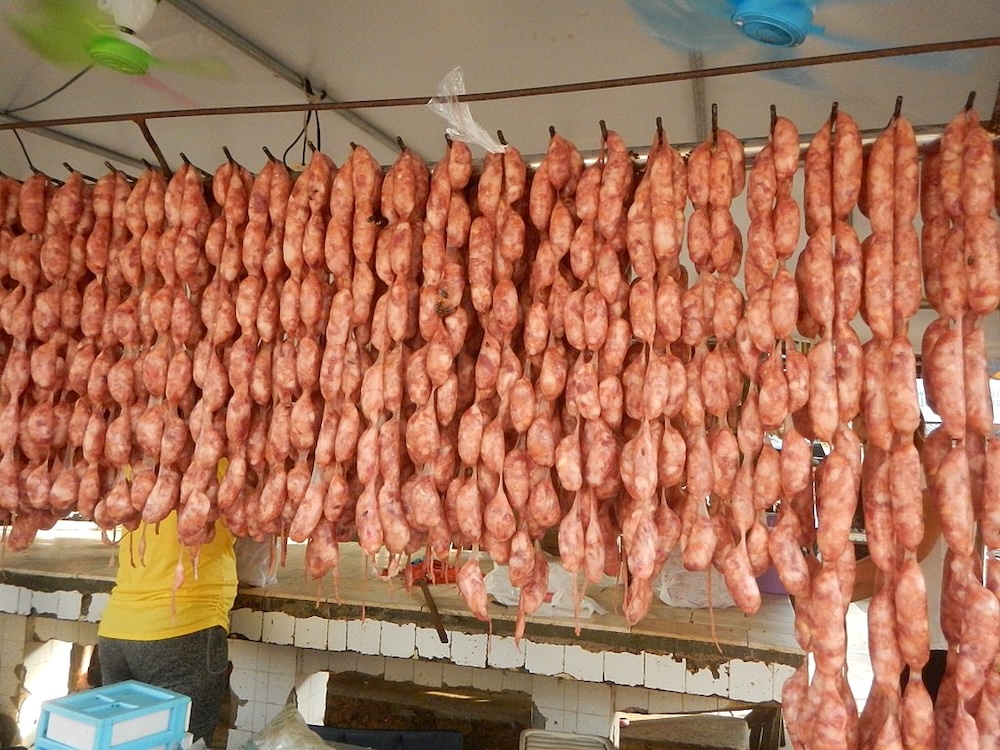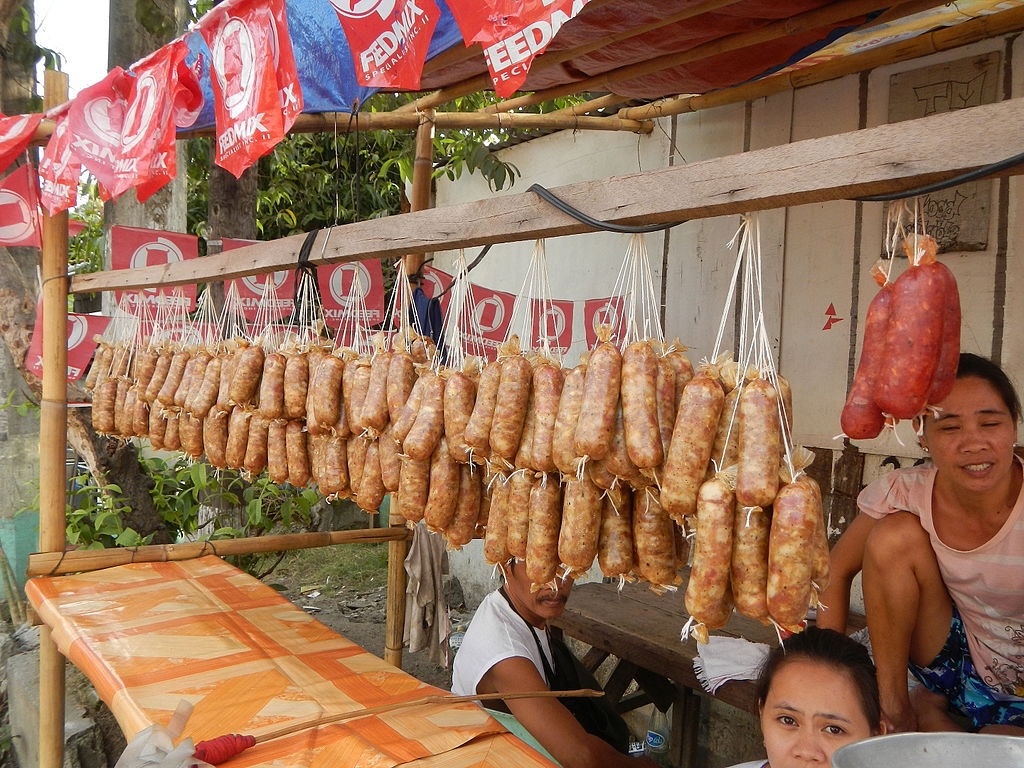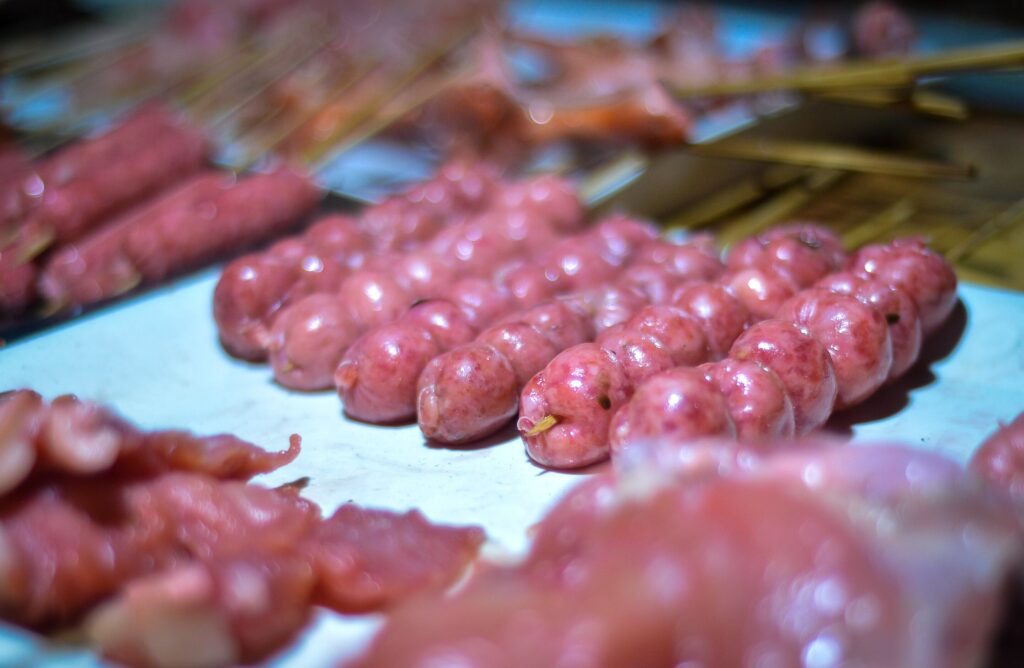Longganisa 101: Getting to know the Philippines’ local sausage

Lucban longganisa | Photo by Emman A. Foronda, CC BY-SA 4.0 via Wikimedia Commons
With over 7,000 islands divided into 17 regions, the Philippines would unexpectedly have a great number of versions of any given thing. Each region would have their own iteration on recipes like adobo or pancit, or crops like coffee or mangoes or bananas. Another thing we have a multitude of versions of is the longganisa.
The longganisa is a type of local sausage named after the Spanish “longaniza.” Sometimes it’s also used interchangeably with another Spanish food item, chorizo.
In the Philippines, sausages or longganisa fall into either of the two major types—recado or hamonado. Recado longganisa has a more savory, salty flavor, while the hamonado longganisa falls on the sweeter side.
Here are some of the most well-known longganisas and where they’re from. Enjoy them for breakfast, with good ol’ sinangag (garlic fried rice) and eggs for a filling longsilog, or for something more unique, craft a Pinoy charcuterie with these and local cheeses.

Longganisa in a market in Tondo, Manila | Photo by Judgefloro, CC0, via Wikimedia Commons
Pampanga
As the food capital of the country, Pampanga surely won’t miss out on having their own version of the longganisa. Pampanga has both recado and hamonado varieties, though the sweeter longganisa is more common. Pampanga’s longganisa is often described as mildly sweet, balanced with saltiness, spice, and garlic.

You can find them in markets in Candaba | Photo by Judgefloro, CC0, via Wikimedia Commons
Calumpit
Calumpit longganisa has a heavier pepper and garlic flavor and thus is also sometimes called longganisang bawang. Visually, Calumpit longganisa is also less reddish than most.

Links of Calumpit’s version | Photo by Judgefloro, Public domain, via Wikimedia Commons
Chorizo de Cebu
Another popular player on the sweet-spicy-garlicky flavor scale, chorizo de Cebu can be identified by its shape. It’s round and plump and reddish in hue, thanks to atsuete.

Chorizo de Cebu | Photo by Emman A. Foronda, CC BY-SA 4.0, via Wikimedia Commons
Vigan
Another popular player in the longganisa conversation is the Vigan longganisa. It’s best known for its garlicky, spicy flavor that comes with a tinge of tang and smokiness.
Alaminos
The Alaminos version is easily identifiable because it doesn’t come linked together the way longganisa usually is. These sausages are divided into small pieces by small pieces of coconut leaf midribs (they look like toothpicks!). The food itself is salty and garlicky and may have a yellowish or orange hue from atsuete.

Vigan, Alaminos, and Cebu longganisa as presented in a Pinoy charcuterie board | Photo by Samantha Ong for Nolisoli.ph
Lucban
Lucban, Quezon is known for a few things, and their longganisa is one of them. It’s garlicky and sour because it includes a lot of garlic and vinegar. It also incorporates a few other herbs and spices not found in other types, like oregano and paprika.
Chorizo de Bacolod
As one might expect from the flavors of Bacolod, their variety called chorizo de Bacolod is smokey with a tinge of sourness because it’s prepared with vinegar, calamansi, and soy sauce.
Cabanatuan
If you’re not into pork, you can go for Cabanatuan’s version. This rich and sweet flavored sausage is also unique in that it uses beef for its meat instead.

